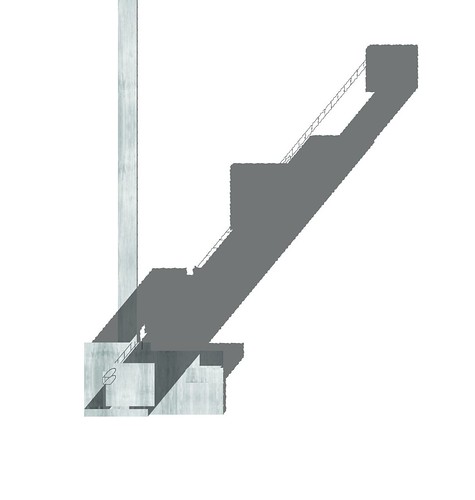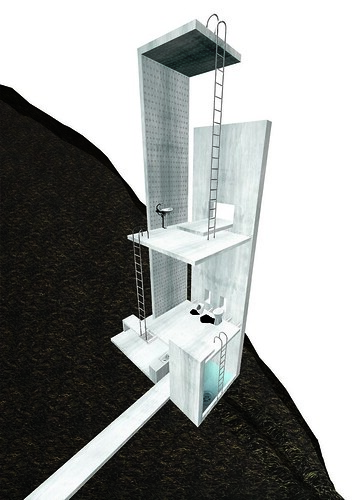inhabited observatory

Ethel Baraona Pohl's post about the inhabited observatory proposes a reading of the particular building as a constructed balance between the banality of some existing material and the unpredictable distorting power of this same banality. The gap between banality and the visionary character of its distortions can be crucial in this era that may not envisage creativity as a set of ex nihilo extraordinary constructions but in the contrary as a set of unpredictable interpretations of the déjà vu.
An inhabitation of the space between banality and unpredictability, between norm and exception is a possible background to think again on architecture. The inhabited observatory is proposed as such a building: its parts could be encountered fragments of existing buildings, found all over Greece; the building could be read as an accumulation of small storehouses, water tanks, ruined secondary spaces in the countryside; never erected yet with such a voluntary arrogance this semi-ruined material is supposed to transform abstract insignificant finds to a house and a monument. The possibility of an inhabitation of this construction is thus meant to suggest a monumental look to vanishing, unimportant building fragments, never proposed as self sufficient architectonic matter. In the same time the inhabited observatory questions about writing (as a usually forgotten possibility of architecture) and about the constitution of an "empty" area through a construction of its center.





No comments:
Post a Comment